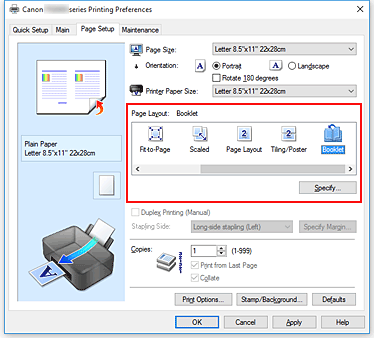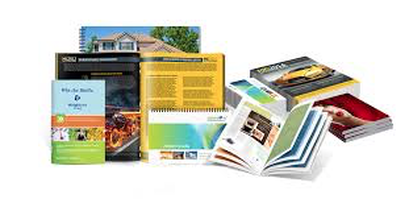What Makes Variable Content So Powerful in Booklet Printing?
What Makes Variable Content So Powerful in Booklet Printing?
Blog Article
The Important Guide to Understanding Pamphlet Printing Options and Techniques
The procedure of brochure printing involves several factors to consider that can greatly influence the end product. From picking the proper layout and size to recognizing the subtleties of binding methods, each selection plays a necessary duty. Additionally, aspects such as paper supply and printing methods more affect the effectiveness of the booklet. As one browses these options, it ends up being critical to grasp just how they adjoin and what that indicates for the total outcome.
Comprehending Booklet Sizes and formats
When taking into consideration booklet printing, understanding the different formats and dimensions available is essential for attaining the desired presentation. Pamphlets can be created in countless layouts, including saddle-stitched, spiral-bound, and perfect-bound, each offering distinctive advantages. Common dimensions vary from conventional letter (8.5 x 11 inches) to smaller choices like A5 (5.8 x 8.3 inches), enabling adaptability based upon web content and target audience.Selecting the proper dimension can affect both the layout and viewers involvement. Bigger dimensions may fit visually driven web content, while smaller layouts may be extra portable and straightforward. Additionally, the variety of pages impacts the option of binding approach, as thicker booklets may require stronger bindings. Ultimately, recognizing these facets allows for a much more tailored strategy, making certain that the end product aligns with the designated message and visual, enhancing the general efficiency of the communication.
Picking the Right Paper Supply

Binding Approaches: Factors To Consider and options
When it concerns binding methods for booklets, numerous options are readily available, each with distinct benefits. Saddle stitch binding offers a cost-efficient option for thinner pamphlets, while ideal binding strategies supply a more polished look for thicker publications. Wire-O binding stands apart for its sturdiness and ease of use, making it perfect for files that need adaptability.
Saddle Stitch Binding
Saddle stitch binding provides a sensible and cost-efficient service for assembling pamphlets, making it a prominent selection amongst companies and authors. This binding technique includes folding sheets of paper in fifty percent and stapling them along the fold line, producing a organized and neat appearance. Usually ideal for pamphlets with a reduced page count, saddle sewing is perfect for publications, sales brochures, and training products. The simpleness of this strategy permits fast production and is frequently preferred for promotional items or brief runs. Nevertheless, it is vital to keep in mind that saddle stitch binding might not be appropriate for thicker pamphlets, as the spine might not hold up under raised weight. Overall, it remains a reliable option for several printing tasks.
Perfect Binding Strategies
Perfect binding is a widely utilized strategy that offers a sleek and expert coating to magazines and brochures. This technique includes gluing the web pages together at the spine using a solid adhesive, enabling a tidy edge and the capability to hold a bigger number of web pages compared to saddle stitching. Perfect binding is particularly suitable for thicker booklets, such as directories and yearly reports, where a strong, flat spinal column is desired. Furthermore, it supplies the option for a printed cover that can be created to improve visual allure. Nevertheless, factors to consider such as page matter, paper weight, and the intended use of the pamphlet need to be taken into consideration, as they can impact sturdiness and total quality.
Wire-O Binding Alternatives
Wire-O binding, known for its resilience and adaptability, uses a superb choice for brochures that need very easy page turning and a specialist appearance. This binding approach uses a series of steel loops that hold pages firmly, permitting them to lie flat when open. It is specifically appropriate for brochures, discussions, and handbooks as a result of its robust nature. Wire-O binding is readily available in various shades and diameters, fitting various page matters and densities. Additionally, it permits the addition of tabs and covers, improving the booklet's general visual. Considerations for Wire-O binding include the her latest blog selection of cord shade, the dimension of the loops, and the extent of modification wanted, every one of which can greatly affect the final item's appearance and performance.
Digital vs. Offset Printing: Which Is Best for You?
When picking a printing technique for brochures, comprehending the differences in between digital and offset printing is essential. Digital printing uses contemporary innovation to produce premium prints rapidly and affordably, making it ideal for brief runs or tasks requiring fast turn-around times. It permits modification, offering the capacity to print on-demand with marginal waste.In comparison, offset printing is a traditional approach that masters generating big amounts with regular high quality. It includes transferring ink from a plate to a rubber blanket, then to the paper, which results in lively shades and specific information. Offset printing commonly needs longer arrangement times and is more cost-efficient for larger volumes.Ultimately, the choice between digital and counter printing depends on task needs, budget, and preferred quantity. For small, time-sensitive projects, electronic could be the best option, while balanced out might be better for bigger, high-quality manufacturings.

Creating Your Booklet: Tips and Finest Practices
When designing a brochure, cautious interest to design, font selection, and color usage can greatly boost its effectiveness. A well-structured design guides the viewers's eye, while appropriate font styles assure readability and communicate the wanted tone. In addition, reliable usage of shade can stimulate feelings and emphasize key info, making the general layout more impactful.
Selecting the Right Design
Exactly how can one efficiently choose the ideal design for a brochure? It is necessary to review the brochure's purpose and target audience. A tidy, organized format improves readability and interaction. Using a grid system can aid in lining up components constantly, producing a professional appearance. Furthermore, including aesthetic pecking order with differing dimensions and placements of pictures and message can direct the reader's eye and highlight vital information. It is also vital to leave adequate white area, which prevents congestion and enables far better focus. Evaluating different formats through mock-ups can give insight into just how the layout carries out in real-world scenarios, guaranteeing that the final item satisfies both practical and visual requirements. Practical Choosing Appropriate Fonts
An appropriate typeface can significantly boost the general layout of a pamphlet, complementing the format and strengthening the material's message. The choice of fonts ought to consider readability, particularly for body text, as it guarantees the information is available to all viewers. Sans-serif typefaces are often preferred for digital styles, while serif typefaces can offer a conventional feeling in printed materials. It's suggested to restrict font selections to two or 3 to maintain visual coherence. In addition, typeface dimension plays a vital function; headings must be not overwhelming yet unique, while body message ought to fit for reading. When choosing fonts, alignment with the booklet's style and target audience is vital for efficient communication and aesthetic appeal.
Effective Use Shade
Shade serves as an effective tool in brochure layout, shaping perceptions and guiding reader feelings. It can evoke feelings of peace, exhilaration, or depend on, depending upon the hues picked. Designers must consider color theory principles, ensuring that the chosen scheme lines up with the brochure's message and target market. For circumstances, utilizing warm colors like red and orange can create urgency, while cooler tones like eco-friendly and blue foster tranquility.Additionally, comparison plays a vital function; corresponding shades can enhance readability and visual allure. Uniformity in color use throughout pages better strengthens brand name identity and communication. Inevitably, reliable shade execution not just catches focus however likewise reinforces the booklet's purpose, making it an essential aspect of successful layout.
Finishing Touches: Coatings and Special Effects
While lots of take into consideration the material and design of a pamphlet the most essential aspects, the completing touches, such as finishes and special effects, play a vital duty in enhancing its overall appeal. Coatings can give security and toughness, guaranteeing that the booklet stands up to wear and tear. Matte coatings provide an innovative, non-reflective surface, while shiny coatings can make colors show up even more appealing and dynamic. Special effects, like embossing or aluminum foil stamping, include a tactile measurement that can create a memorable perception. These strategies can highlight certain locations, drawing attention to important details or developing visual passion. Additionally, UV covering can give a high-shine coating that elevates the why not find out more total look.Together, these ending up touches not only boost description the booklet's aesthetic but also communicate professionalism and focus to information, ultimately leaving a long-term effect on the reader.
Expense Factors To Consider for Pamphlet Printing
Comprehending the different cost considerations for booklet printing is important for companies and organizations aiming to enhance their spending plans. Trick variables affecting costs include the selection of binding, ink, and paper approaches. Better products, such as exceptional paper or specialized inks, usually enhance the total expenditure. Furthermore, the size and page count of the booklet play a significant duty; larger pamphlets need more sources and time to produce.Another important factor to consider is the printing method, whether electronic or countered, as each has its very own rates framework and viability for various quantities. Organizations ought to additionally factor in style prices, which can differ based on intricacy and using professional services. Ultimately, delivery and handling charges can include in the overall, especially for huge orders. By assessing these aspects, companies can make enlightened choices that straighten with their financial capabilities while accomplishing the preferred quality in their printed products.
Frequently Asked Concerns
What Are the Environmental Influences of Pamphlet Printing?
The ecological effects of brochure printing include deforestation from paper production, carbon emissions from transport, and waste generation from disposed of products - Booklet Printing. Lasting techniques, such as using recycled paper and environmentally friendly inks, can alleviate these effects
Exactly How Can I Guarantee Shade Accuracy in My Pamphlet?
To guarantee shade accuracy in a booklet, one must make use of adjusted screens, employ professional shade accounts, conduct test prints, and choose top notch printing services that offer shade matching and proofing alternatives for finest outcomes.
What Is the Common Turnaround Time for Pamphlet Printing?
The regular turn-around time for pamphlet printing varies depending upon the complexity and quantity - Booklet Printing. Normally, it ranges from a couple of days to 2 weeks, affected by factors such as printing methods and ending up needs
Are There Minimum Order Quantities for Booklet Printing?

Can I Print Brochures in Multiple Languages?
Printing booklets in several languages is feasible. Many printing solutions use alternatives for multilingual or bilingual designs, permitting for effective interaction. Careful planning warranties that develop elements fit various languages without endangering readability or appearances. Furthermore, factors such as paper stock and printing methods further influence the effectiveness of the brochure. When taking into consideration booklet printing, understanding the various layouts and sizes available is important for achieving the desired discussion. When selecting a printing approach for booklets, comprehending the distinctions in between digital and offset printing is important. Furthermore, the size and page matter of the brochure play a considerable duty; bigger booklets need even more resources and time to produce.Another vital factor to consider is the printing technique, whether digital or offset, as each has its very own rates structure and suitability for different amounts. The ecological impacts of booklet printing consist of deforestation from paper production, carbon discharges from transportation, and waste generation from disposed of materials.
Report this page